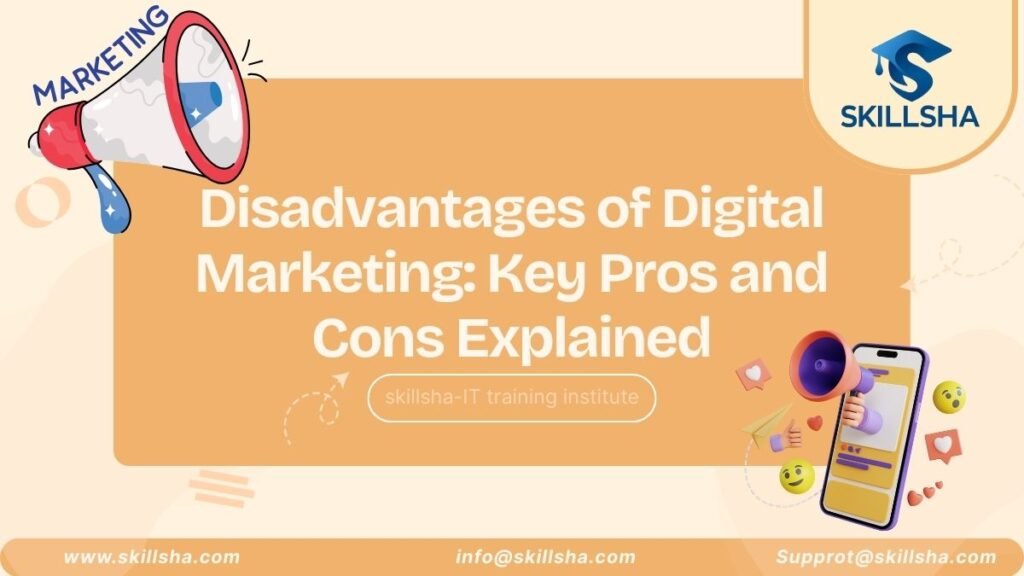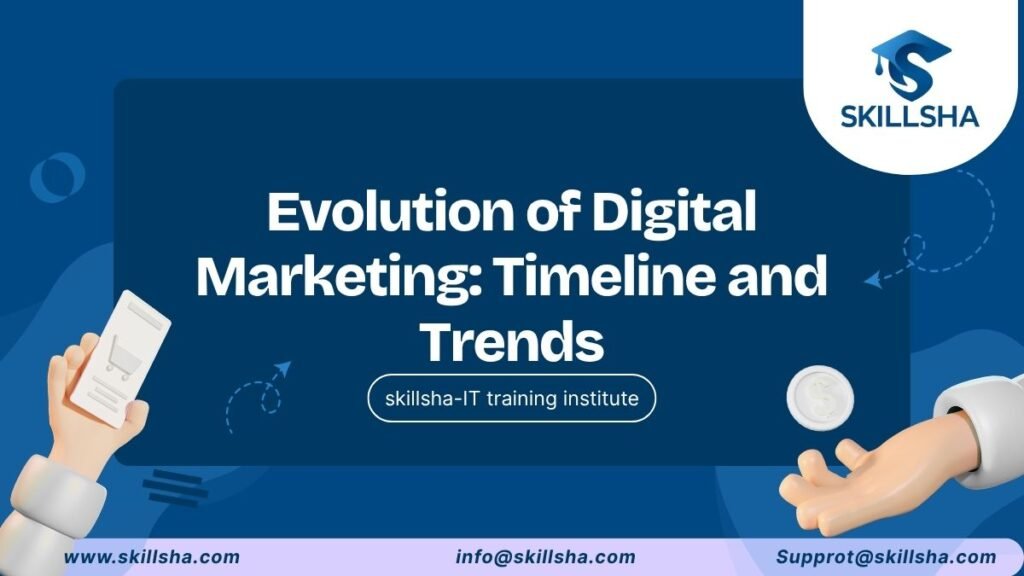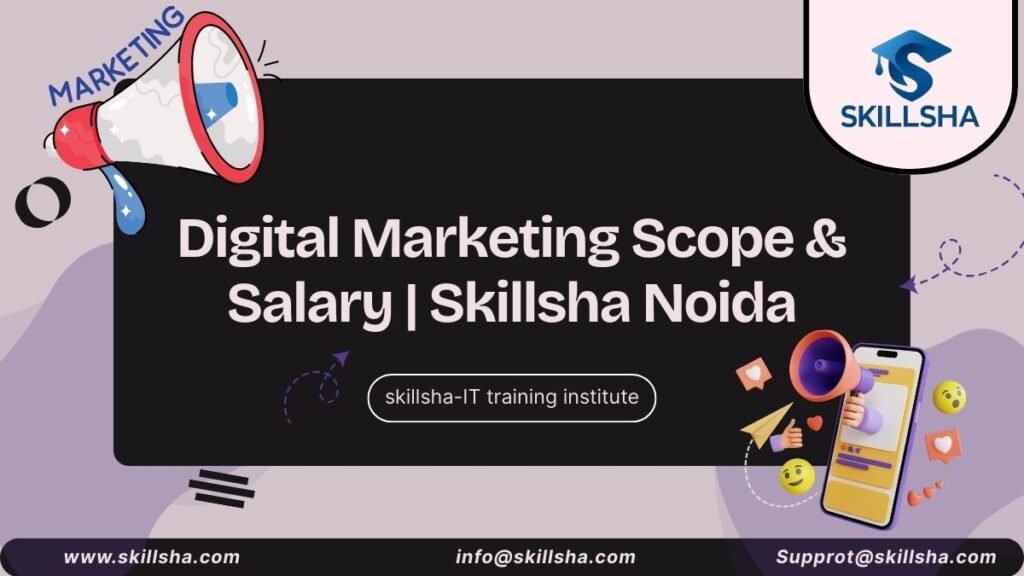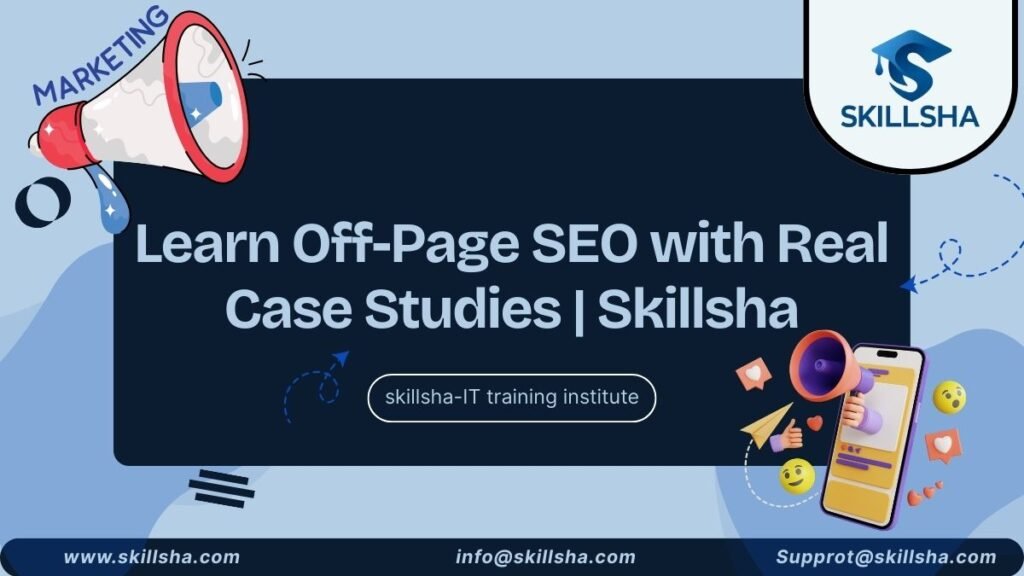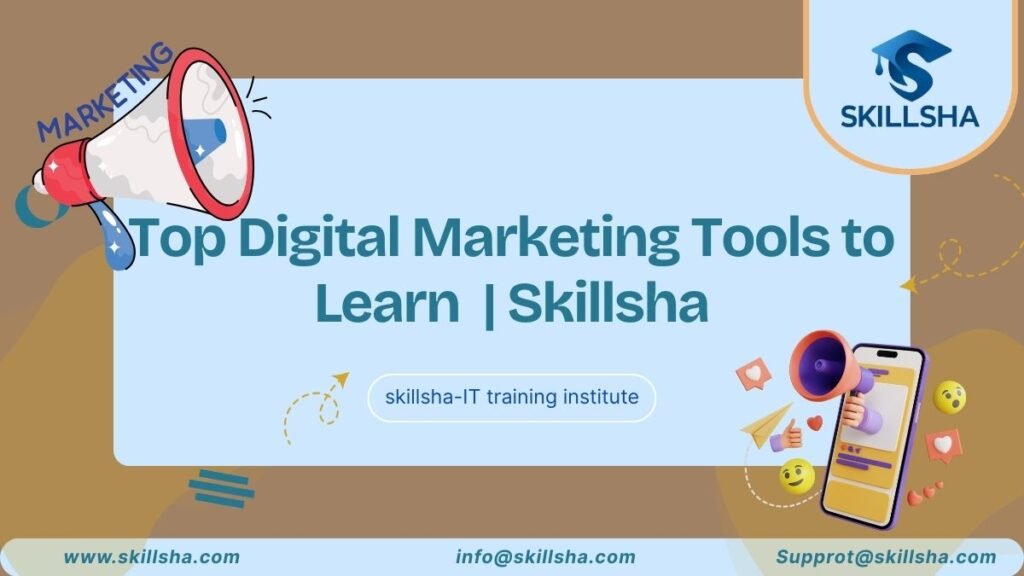Picture this: you’ve just launched your dream business, invested a lot in a sleek website, and poured your heart into creating the perfect social media strategy. Yet, three months later, you’re overwhelmed by analytics, struggling with algorithm changes, and watching your ad costs soar while competitors seem to easily dominate your market. This is the reality of digital marketing, a double-edged sword that can either propel your business to new heights or make you question every marketing choice you’ve ever made.
While digital marketing has changed how businesses connect with customers, it’s not the magical answer many entrepreneurs think it is. Every coin has two sides, and digital marketing is no different. At Skillsha’s digital marketing courses in Pune, we believe in showing the full picture—both the exciting opportunities and the tough realities of navigating the digital world.
Understanding the Digital Marketing Landscape
Before discussing the disadvantages of digital marketing, let’s clarify what it involves. Digital marketing includes social media advertising, search engine optimization, email campaigns, and content marketing. It combines meeting your audience through digital channels and has become essential for modern business growth.
However, many businesses find out too late that digital marketing is not just about sharing attractive images on Instagram or placing a few Google ads. It is a complicated system that needs ongoing attention, careful planning, and a considerable investment of time and money.
The Major Disadvantages of Digital Marketing
1. Information Overload and Analysis Paralysis
One of the biggest issues with digital marketing is the overwhelming amount of data and choices available. Unlike traditional marketing, which tracks a few key metrics, digital marketing offers a flood of analytics. Click-through rates, conversion rates, cost per acquisition, lifetime value, engagement rates, bounce rates—this list seems endless.
This data overload often leads to analysis paralysis. Business owners find themselves spending more time looking at reports than actually implementing strategies. At our digital marketing courses in Noida, we often meet students who feel stuck because of the many metrics, unsure which ones truly matter for their business goals.
The constant arrival of new tools, platforms, and strategies adds to the confusion. Should you focus on TikTok or LinkedIn? Is it better to invest in SEO or paid ads? Should you prioritize email marketing or influencer partnerships? These decisions become tougher when every marketing expert claims their method is the “secret sauce” to success.
2. Intense Competition and Market Saturation
The availability of digital marketing tools has filled the market with competition. Although it’s easier than ever to launch a digital marketing campaign, standing out is more challenging. Every business, from large corporations to local bakeries, is vying for the same online space.
This intense competition shows in several ways. Search engine results pages are dominated by paid ads, making it harder to gain organic visibility. Social media platforms are crowded with content, lowering the organic reach of business posts. Email inboxes are full of promotional messages, which leads to fewer open rates and less engagement.
The outcome? Increased costs and lower returns. What used to cost pennies per click now costs dollars. The organic reach that businesses once relied on has drastically dropped across all major platforms. Small businesses often find themselves unable to compete for popular keywords, struggling against companies with much larger marketing budgets.
3. Constant Algorithm Changes and Platform Dependencies
One frustrating downside of digital marketing is the lack of control over the platforms you depend on. Facebook, Google, Instagram, and other major platforms frequently update their algorithms, sometimes drastically impacting your campaign’s success overnight.
Imagine spending months building an organic following on Facebook, only to find out one day that your posts reach only 5% of your audience instead of the 50% you were accustomed to. Or consider perfecting your Google Ads strategy, only to have Google change its ad policies, making your whole approach ineffective.
This dependence on platforms creates a risky situation for businesses. You are basically building your marketing on rented space, where the landlord can change the rules at any time. Many businesses have learned this lesson the hard way, losing years of work due to algorithm changes or policy updates.
4. High Costs and Budget Drain
Contrary to popular belief, effective digital marketing can be quite costly. While anyone can create a Facebook ad for a few dollars, achieving meaningful results often requires a significant investment.
Paid advertising costs have steadily risen across all platforms. Google Ads costs have increased by over 15% year-over-year in many sectors. Facebook advertising costs have similarly soared as more businesses compete for limited ad space. What’s especially challenging is that these costs often rise faster than the returns, resulting in businesses needing to spend more just to maintain their current levels of effectiveness.
In addition to ad costs, there are hidden expenses that many businesses overlook. Professional design tools, analytics software, marketing automation platforms, and content creation resources quickly add up. A complete digital marketing strategy might require subscriptions to numerous tools, each costing hundreds of dollars each month.
5. Skill Requirements and Learning Curve
Digital marketing is not something you can master overnight. It needs a variety of skills, including creative design, analytical thinking, technical implementation, and strategic planning. The learning curve is steep, and changes happen quickly.
At Skillsha’s digital marketing courses in Noida, we see firsthand how overwhelming this can be for newcomers. Students have to learn to navigate complex advertising platforms, grasp search engine optimization principles, master content creation, analyze data, and keep up with platform updates—all while trying to run their businesses.
This complexity usually leads to one of two outcomes: businesses either invest a lot of time and resources to build internal expertise, or they outsource to agencies and consultants, which increases their costs. Neither option works well for small businesses with limited budgets and resources.
6. Privacy Concerns and Regulatory Challenges
The digital marketing landscape is becoming more complicated legally and ethically. Regulations like GDPR in Europe and CCPA in California have made it harder to gather and use customer data. Apple’s iOS updates have limited tracking capabilities, complicating the measurement of campaign effectiveness and precise audience targeting.
These privacy changes have not only affected data collection; they have also changed how digital marketing functions. Businesses can no longer depend on detailed customer tracking to enhance their campaigns. Attribution modeling has become more complex and less accurate. Many targeting abilities that made digital advertising effective are gradually being phased out.
For businesses operating internationally, figuring out different privacy rules in various regions adds another layer of complexity. Non-compliance can lead to hefty fines and damage to reputation, making legal expertise almost essential for serious digital marketing efforts.
7. Short Attention Spans and Content Fatigue
The digital age has significantly shortened human attention spans. Studies indicate that the average person’s attention span has dropped from 12 seconds to 8 seconds over the past twenty years. This presents a major challenge for marketers trying to deliver complex messages or build meaningful connections with their audience.
Content fatigue is another serious issue. Consumers are bombarded with hundreds of marketing messages daily across various channels. This constant exposure has resulted in banner blindness, ad-blocking software adoption, and overall skepticism towards marketing messages. Breaking through this noise requires increasingly creative and resource-intensive methods.
The consequence is a constant pressure to produce more engaging, frequent, and diverse content. Businesses often find themselves trapped in a cycle of content creation, always producing material just to maintain visibility, frequently at the expense of quality and strategic thought.
8. Measurement and Attribution Challenges
Although digital marketing provides more data than traditional marketing, measuring its impact accurately remains surprisingly difficult. Attribution modeling—deciding which marketing touchpoints should get credit for conversions—is complex and often leads to inaccuracies.
Customer journeys have become increasingly fragmented. A typical customer might discover your brand through a social media post, research your products on Google, read reviews on third-party sites, visit your website multiple times, and finally purchase after receiving an email promotion. Figuring out which channel “caused” the sale is nearly impossible.
This measurement challenge makes it tough to optimize marketing spending effectively. Businesses often have trouble identifying which campaigns truly drive results and which simply take credit for conversions that would have occurred anyway.
The Advantages: Why Digital Marketing Still Matters
Despite the drawbacks of digital marketing, it’s important to understand why businesses keep investing in digital strategies. Recognizing both sides helps set realistic expectations and make better strategic choices.
Cost-Effectiveness (When Done Right)
While digital marketing can be costly, it often offers a better return on investment than traditional advertising when done strategically. The chance to target specific audiences and track results allows for improved campaign efficiency.
Global Reach and Accessibility
Digital platforms give businesses access to global markets like never before. Small companies can connect with customers worldwide without needing the large infrastructure that traditional global expansion demands.
Real-Time Engagement and Feedback
Unlike traditional marketing, digital channels enable instant interaction with customers. This allows for quick feedback, effective customer service, and stronger relationship building.
Detailed Analytics and Insights
Even with its complexity, digital marketing provides valuable insights into customer behavior, preferences, and journey patterns that traditional channels cannot offer.
Flexibility and Agility
Digital campaigns can be modified in real-time based on performance data. This flexibility lets businesses respond quickly to market changes and continuously improve their strategies.
Conclusion: Embracing Digital Marketing Wisely
The disadvantages of digital marketing are real and significant, but they can be overcome. Like any powerful tool, digital marketing requires skill, strategy, and realistic expectations to be effective. The businesses that thrive are the ones that recognize both the opportunities and challenges and approach their digital strategies with clear awareness.
Digital marketing isn’t going anywhere; it will likely become even more crucial to business success in the coming years. However, success takes more than just jumping on the latest trend or platform. It requires thoughtful planning, ongoing learning, and the insight to know how to adjust when necessary.
The goal isn’t to avoid digital marketing because of its drawbacks. Instead, it’s to approach it smartly. Understand the challenges, prepare for them, and create strategies that consider both the opportunities and the hurdles in the digital landscape.
Whether you’re a small business owner trying to expand your reach or a marketing professional looking to improve your skills, knowing these disadvantages will make you a better digital marketer. The best marketers don’t ignore challenges; they anticipate and conquer them.
Remember, every successful digital marketing strategy rests on a base of realistic expectations, strategic thinking, and ongoing adaptation. By recognizing and preparing for the drawbacks of digital marketing, you’re already ahead of those who dive in blindly expecting easy results.
Frequently Asked Questions (FAQs)
Q: What is the biggest disadvantage of digital marketing?
A: The most significant disadvantage is often the intense competition and rising costs, which make it difficult for small businesses to compete effectively against larger companies with bigger budgets.
Q: How much should I budget for digital marketing?
A: Most businesses should allocate 7-12% of their revenue to marketing, with a significant portion going to digital channels. However, the exact amount depends on your industry, goals, and competition level.
Q: Can small businesses succeed with digital marketing despite these disadvantages? A: Yes, but it requires strategic focus, realistic expectations, and often professional guidance. Success comes from choosing the right channels and executing consistently rather than trying to be everywhere.
Q: How do I stay updated with constant digital marketing changes?
A: Follow industry publications, attend webinars, take courses (like those at Skillsha), and join professional communities. Continuous learning is essential in digital marketing.
Q: Is digital marketing more expensive than traditional marketing?
A: It depends on your approach and industry. While digital marketing can be cost-effective, achieving significant results often requires substantial investment in tools, advertising, and expertise.
Q: How long does it take to see results from digital marketing?
A: Results vary by channel and strategy. Paid advertising can show immediate results, while SEO and content marketing typically take 3-6 months to show significant impact.
Q: Should I handle digital marketing in-house or outsource it?
A: This depends on your budget, team capabilities, and business complexity. Many businesses benefit from a hybrid approach – handling some aspects internally while outsourcing specialized tasks to experts.

